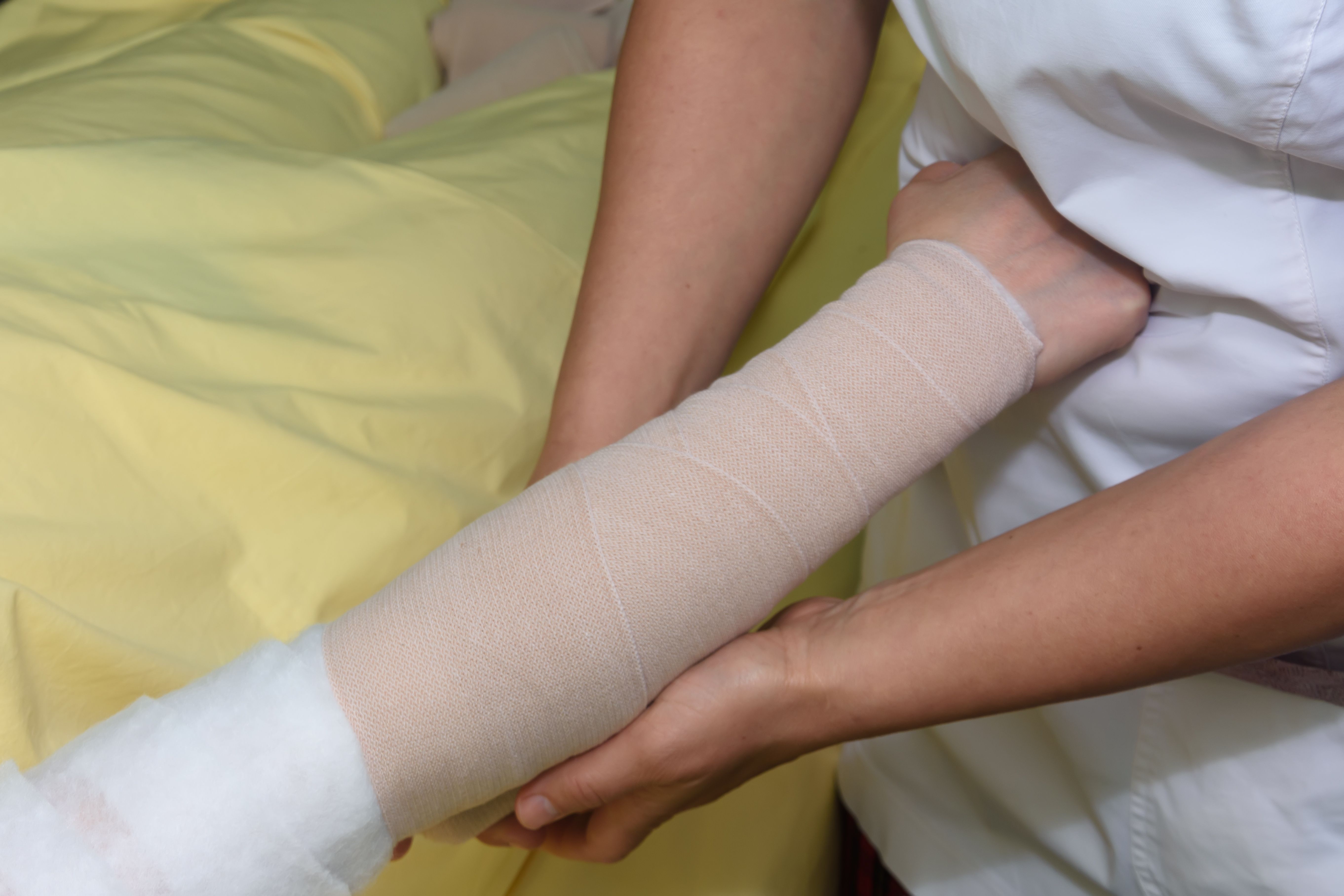Earlier Lymphedema Detection May Lead to Better Outcomes
When a green dye was used to detect early signs of breast cancer-related lymphedema, patients tended to have better outcomes with the condition, recent research showed.
Compression is one way patients can manage lymphedema.

Early detection and a personalized approach are key in breast cancer-related lymphedema, according to research conducted at the Magee-Women’s Hospital of UPMC and presented at the 40th Annual Miami Breast Cancer Conference.
Lymphedema is a condition that involves fluid buildup in the limbs that causes swelling. Approximately 40% of patients with breast cancer experience the side effect, according to the National Institutes of Health. It often occurs when lymph nodes are removed from the patient’s armpit area, which can lead to a disruption in the drainage of lymphatic fluid.
“Breast cancer-related lymphedema is a debilitating health condition that can result in complications and decreased quality of life,” the authors wrote on their poster presentation.
While there is currently no cure for lymphedema, the recent study showed that early lymphatic flow mapping using indocyanine green lymphography — which is a green dye that is injected into the skin and flows throughout the lymphatic system, thereby allowing clinicians to track lymphatic movement — may help identify lymphedema earlier. Earlier identification can lead to earlier treatment, which can improve overall outcomes for patients with the condition.
“Personalized approaches wither early diagnosis and intervention are critical steps in (breast cancer-related lymphedema) to prevent disease progression,” the authors wrote.
The research involved 162 patients with breast cancer who underwent axillary lymph node dissection (removal of cancerous or potentially cancerous lymph nodes from under the armpit) or sentinel lymph node biopsy (removal of lymph nodes to check if they are cancerous). Among this group of patients, 106 underwent a mastectomy, while 55 underwent lumpectomy. The average number of lymph nodes removed was nine, with the average number of metastatic lymph nodes being one.
All patients were at high risk for lymphedema but did not have any symptoms at the start of the study.
When the researchers saw via lymphography that patients began to experience stage 1 or higher lymphedema, meaning that there was some level of swelling or increased stiffness in the limbs, those individuals were placed on a preventative treatment regimen of physical therapy with exercise, personalized manual lymphatic drainage, the usage of compression sleeves and gloves and personalized sequential pneumatic compression therapy (the use of a device that typically uses air to compress limbs).
READ MORE:Although Many of Us Don’t Love the Idea of It, Exercise Can Help Reduce the Effects of Lymphedema
Study findings showed that at an average follow-up of 18 months (ranging 6 to 49 months), eight patients (4.9%) had clinical lymphedema present, while 154 patients (95.1%) did not have clinical lymphedema.
“These findings confirm the value of (indocyanine green lymphography) in detecting (lymphedema) and providing a personalized approach to (lymphedema) treatments in clinical (lymphedema) prevention,” the authors concluded.
For more news on cancer updates, research and education, don’t forget to subscribe to CURE®’s newsletters here.
Cannabis Talks During Cancer, Cardiometabolic Comorbidities and Current Research
March 4th 2024In addition to a breakthrough therapy designation for a lung cancer drug, this week we’ll be talking a lot about additional side effects and health conditions that may come with a cancer diagnosis, and how to manage them.
Listen